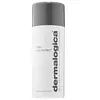What's inside
What's inside
 Key Ingredients
Key Ingredients

 Benefits
Benefits

 Concerns
Concerns

 Ingredients Side-by-side
Ingredients Side-by-side

Microcrystalline Cellulose
AbsorbentMagnesium Oxide
AbsorbentSodium Cocoyl Isethionate
CleansingColloidal Oatmeal
AbsorbentDisodium Lauryl Sulfosuccinate
CleansingSodium Lauroyl Glutamate
Oryza Sativa Bran Extract
Skin ConditioningOryza Sativa Starch
AbsorbentHydrogenated Coconut Acid
EmollientAllantoin
Skin ConditioningPapain
Skin ConditioningSalicylic Acid
MaskingGinkgo Biloba Leaf Extract
Skin ConditioningCamellia Sinensis Leaf Extract
AntimicrobialGlycyrrhiza Glabra Root Extract
BleachingPCA
HumectantPopulus Tremuloides Bark Extract
AntiseborrhoeicCyclodextrin
AbsorbentSodium Isethionate
CleansingLauryl Methacrylate
Maltodextrin
AbsorbentMelaleuca Alternifolia Leaf Oil
AntioxidantCitrus Paradisi Peel Oil
MaskingSodium Dehydroacetate
PreservativeHydrolyzed Corn Starch Hydroxyethyl Ether
Emulsion StabilisingWater
Skin ConditioningLimonene
PerfumingCitric Acid
BufferingMicrocrystalline Cellulose, Magnesium Oxide, Sodium Cocoyl Isethionate, Colloidal Oatmeal, Disodium Lauryl Sulfosuccinate, Sodium Lauroyl Glutamate, Oryza Sativa Bran Extract, Oryza Sativa Starch, Hydrogenated Coconut Acid, Allantoin, Papain, Salicylic Acid, Ginkgo Biloba Leaf Extract, Camellia Sinensis Leaf Extract, Glycyrrhiza Glabra Root Extract, PCA, Populus Tremuloides Bark Extract, Cyclodextrin, Sodium Isethionate, Lauryl Methacrylate, Maltodextrin, Melaleuca Alternifolia Leaf Oil, Citrus Paradisi Peel Oil, Sodium Dehydroacetate, Hydrolyzed Corn Starch Hydroxyethyl Ether, Water, Limonene, Citric Acid
Sodium Myristoyl Glutamate
CleansingSodium Lauroyl Glutamate
Talc
AbrasiveZea Mays Starch
AbsorbentHydroxypropyl Starch
Kaolin
AbrasiveAluminum Silicate
AbrasiveDisodium Lauryl Sulfosuccinate
CleansingMicrocrystalline Cellulose
AbsorbentCarrageenan
Water
Skin ConditioningSerica Powder
Skin ConditioningButylene Glycol
HumectantAcetyl Glucosamine
Skin ConditioningAlcohol
AntimicrobialLactic Acid
BufferingCitric Acid
BufferingDipotassium Glycyrrhizate
HumectantQuillaja Saponaria Bark Extract
CleansingHydrolyzed Silk
HumectantPanax Ginseng Root Extract
EmollientPerilla Ocymoides Leaf Extract
TonicProtease
ExfoliatingLipase
Skin ConditioningSodium Benzoate
MaskingChlorphenesin
AntimicrobialPhenoxyethanol
PreservativeCI 61570
Cosmetic ColorantSodium Myristoyl Glutamate, Sodium Lauroyl Glutamate, Talc, Zea Mays Starch, Hydroxypropyl Starch, Kaolin, Aluminum Silicate, Disodium Lauryl Sulfosuccinate, Microcrystalline Cellulose, Carrageenan, Water, Serica Powder, Butylene Glycol, Acetyl Glucosamine, Alcohol, Lactic Acid, Citric Acid, Dipotassium Glycyrrhizate, Quillaja Saponaria Bark Extract, Hydrolyzed Silk, Panax Ginseng Root Extract, Perilla Ocymoides Leaf Extract, Protease, Lipase, Sodium Benzoate, Chlorphenesin, Phenoxyethanol, CI 61570
 Reviews
Reviews

Ingredients Explained
These ingredients are found in both products.
Ingredients higher up in an ingredient list are typically present in a larger amount.
Citric Acid is an alpha hydroxy acid (AHA) naturally found in citrus fruits like oranges, lemons, and limes.
Like other AHAs, citric acid can exfoliate skin by breaking down the bonds that hold dead skin cells together. This helps reveal smoother and brighter skin underneath.
However, this exfoliating effect only happens at high concentrations (20%) which can be hard to find in cosmetic products.
Due to this, citric acid is usually included in small amounts as a pH adjuster. This helps keep products slightly more acidic and compatible with skin's natural pH.
In skincare formulas, citric acid can:
While it can provide some skin benefits, research shows lactic acid and glycolic acid are generally more effective and less irritating exfoliants.
Most citric acid used in skincare today is made by fermenting sugars (usually from molasses). This synthetic version is identical to the natural citrus form but easier to stabilize and use in formulations.
Read more about some other popular AHA's here:
Learn more about Citric AcidWe don't have a description for Disodium Lauryl Sulfosuccinate yet.
Microcrystalline Cellulose is another name for refined wood pulp. It is used as an emulsifier and mattifying ingredient. As an emulsifier, it helps keep ingredients together.
Sodium Lauroyl Glutamate is the sodium salt from the lauric acid of glutamic acid.
It is a surfactant and helps cleanse the skin. Surfactants gather oil, dirt, and other pollutants from your skin so they may be washed away easily.
Water. It's the most common cosmetic ingredient of all. You'll usually see it at the top of ingredient lists, meaning that it makes up the largest part of the product.
So why is it so popular? Water most often acts as a solvent - this means that it helps dissolve other ingredients into the formulation.
You'll also recognize water as that liquid we all need to stay alive. If you see this, drink a glass of water. Stay hydrated!
Learn more about Water